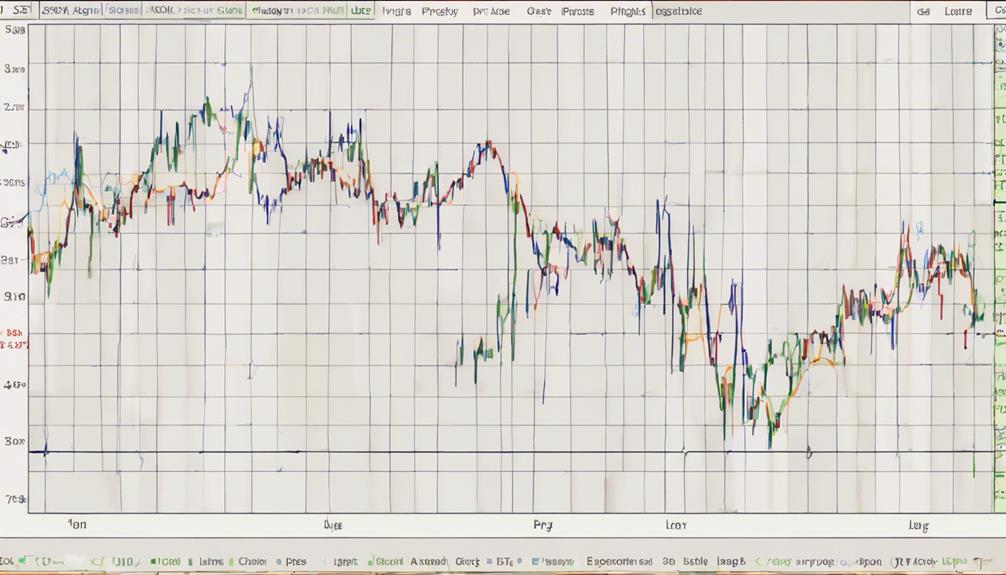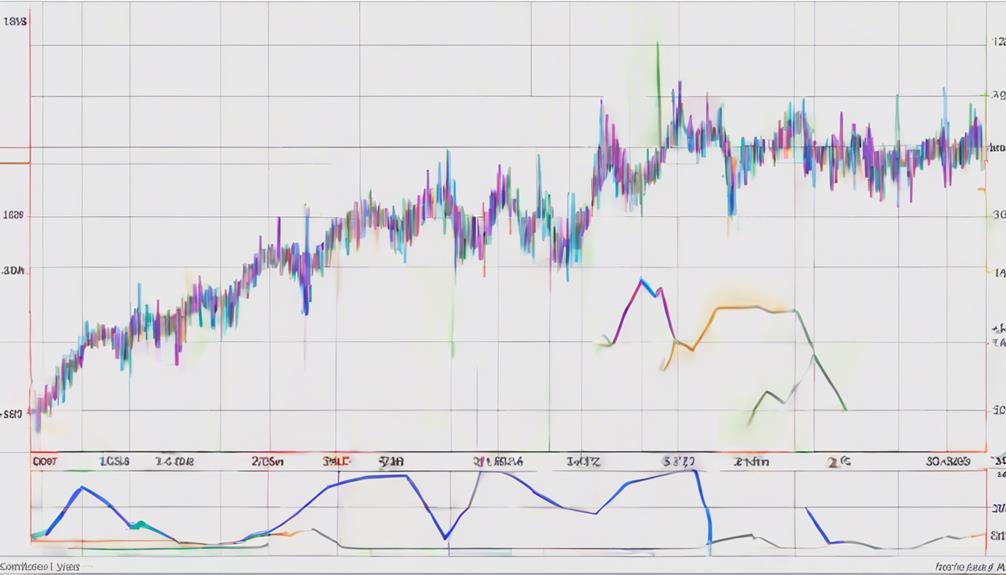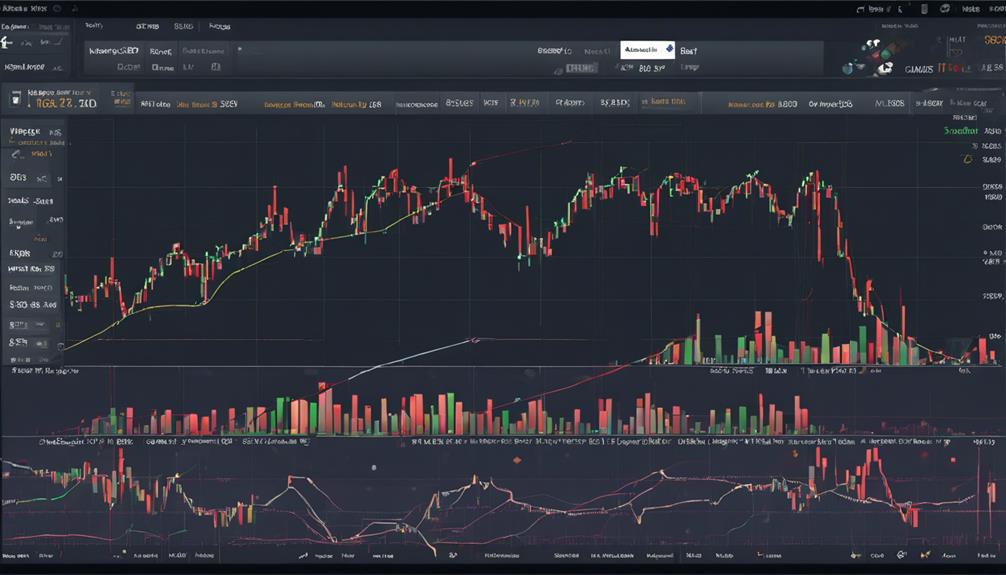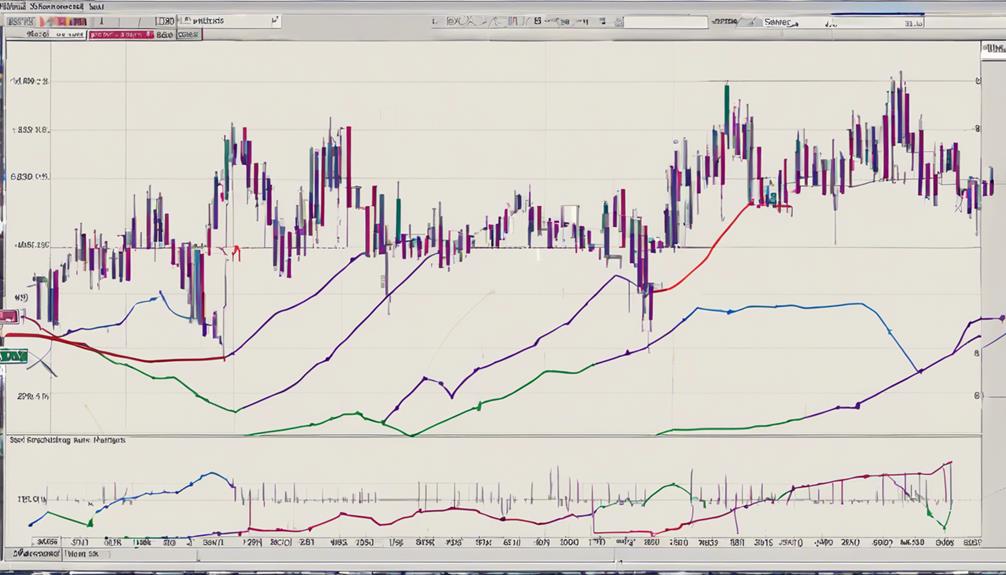Imagine moving averages as a compass guiding you through the turbulent waters of financial markets.
Understanding the intricacies of these indicators can significantly enhance your ability to predict price movements with precision.
By unraveling the complexities of different moving averages types and mastering their interpretations, you can unlock a powerful tool for navigating the ever-changing landscape of trading.
Understanding Moving Averages Calculation
Understanding the calculation of moving averages is essential for accurately interpreting price trends in securities. Moving averages, whether Simple Moving Average (SMA) or Exponential Moving Average (EMA), provide traders with insights into the average price of a security over a specific period.
SMA evenly weights each price point, while EMA places more emphasis on recent prices, making it more responsive to current market conditions. By analyzing these averages over common periods like 50, 100, and 200 days, traders can identify trends, support levels, and resistance levels.
This data-driven approach helps traders make informed decisions on entry and exit points, enhancing their trading strategies for better outcomes in the dynamic world of securities trading.
Types of Moving Averages for Prediction

To predict price movements effectively, traders utilize various types of moving averages, each offering distinct advantages in analyzing market trends. The Simple Moving Average (SMA) smooths out price fluctuations over a specific period, providing a clear trend analysis.
On the other hand, the Exponential Moving Average (EMA) reacts faster to price changes by giving more weight to recent data points.
Weighted Moving Average (WMA) emphasizes recent information, aiding in swift identification of market reversals. Different types of moving averages serve specific purposes in predicting price trends accurately. Understanding the characteristics and calculations of these moving averages is crucial for making informed trading decisions based on reliable price prediction models.
Interpreting Moving Averages Trends

Interpreting moving averages trends involves analyzing the patterns formed by the price in relation to these smoothed out indicators. By understanding the relationship between price movements and moving averages, you can make more accurate predictions in trading.
Here are five key points to consider:
- A price above the moving average indicates an uptrend, while a price below suggests a downtrend.
- Breaking a moving average can signal a potential trend reversal in the market.
- Moving averages assist in determining buy or sell signals based on their relationship with the price.
- Analyzing moving averages trends is crucial for accurate price prediction.
- Tracking the interaction between price and moving averages helps in identifying upcoming market movements efficiently.
Leveraging Moving Averages for Support

Employing moving averages strategically can enhance your ability to identify key support levels during price fluctuations. Moving averages act as dynamic support, signaling potential bounce levels in the market. Traders often find support levels near moving averages, indicating a possible reversal in trend direction.
How Can Moving Averages Help in Accurate Price Prediction for Options Trading?
When it comes to decoding options trading moving averages, these indicators can be incredibly useful in predicting future price movements. By analyzing the average price of an asset over a specific period, traders can identify trends and make more accurate predictions about potential price fluctuations.
Avoiding Common Moving Averages Mistakes

Common errors arise when traders rely solely on a single timeframe for moving average analysis, potentially leading to inaccurate predictions. To avoid common moving averages mistakes, consider the following factors:
- Adjusting Settings: Overlooking the importance of adjusting moving average settings based on market conditions.
- Trading Style: Failing to consider the type of moving average suitable for the trading style and timeframe.
- Confirmation Signals: Ignoring the confirmation signals from other indicators when using moving averages.
- Risk Management: Not practicing proper risk management while relying solely on moving averages for trading signals.
- Misleading Signals: How ignoring these factors can lead to misleading signals and false trading decisions.
How Can Moving Averages Help in Price Prediction for Options Trading?
Moving averages play a vital role in decoding options trading averages by smoothing out price data to identify trends. By analyzing moving averages, traders can make more informed decisions when predicting future price movements, which is crucial in options trading. These averages help traders to understand the direction of the market.
Frequently Asked Questions
What Is the 5 8 13 21 EMA Strategy?
The 5 8 13 21 EMA strategy combines Exponential Moving Averages with different periods, aiding in precise price prediction. It utilizes EMAs of 5, 8, 13, and 21 to capture short and medium-term trends efficiently, offering valuable buy or sell signals.
What Is the Most Accurate Moving Average Strategy?
For the most accurate moving average strategy, consider market conditions and timeframe. Short-term predictions may benefit from the Exponential Moving Average (EMA), while Simple Moving Average (SMA) could suit long-term investors. Combining different lengths can enhance accuracy.
What Is the 5 20 EMA Crossover Strategy?
In the 5 20 EMA crossover strategy, traders observe the 5-period EMA crossing over the 20-period EMA. A bullish signal emerges when the 5 EMA moves above the 20 EMA, indicating a possible uptrend, while a bearish signal suggests a potential downtrend with the 5 EMA dipping below the 20 EMA.
What Is the 9 21 55 EMA Strategy?
Unlock the power of 9, 21, 55 EMA strategy for insightful market analysis. Combine short and long-term trends for informed decisions. Crossovers pinpoint entry and exit opportunities, giving you a comprehensive view of price movements.
Conclusion
In conclusion, mastering the art of decoding moving averages is like unlocking the hidden patterns within the chaotic market landscape. By harnessing the power of SMA, EMA, and Weighted Moving Average, you can navigate through the ups and downs with precision.
Remember, moving averages serve as your guiding light in the dark abyss of price prediction, illuminating the path towards profitable trades. Embrace the data-driven insights they offer, and watch your trading journey flourish.
